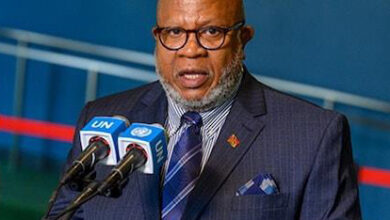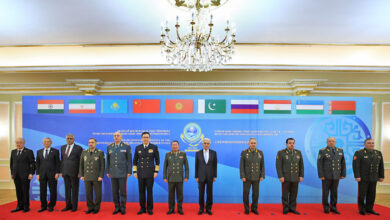World watches as King Charles ascends the British throne
By SHYAM BHATIA
London, October 2. With arguably the world’s longest apprenticeship under his belt – he was heir to the British throne for 70 years – the UK and Commonwealth are waiting to see how King Charles evolves as his mother’s heir and successor and the UK’s new monarch.
Only hours after the death of his mother, Queen Elizabeth, the 73 year old’s schedule has been nothing short of brutal. From attending multiple remembrance services in honour of his mother, travelling to each of the UK’s four nations, and being on hand to welcome dignitaries and world leaders who arrived in droves to attend Elizabeth’s funeral, Charles has conducted himself with same grace and dignity for which his mother was so revered.
It has been confirmed that King Charles, an outspoken envrionmentalist prior to ascending to the throne, will not be attending COP 27. As Prince of Wales, he was expected to attend this meeting in Egypt next month (November) to participate in discussions about climate change. Staying away is a clear indication that Charles now accepts how the role of sovereign is greater than the individual occupying his position.
In effect this means that, like his late mother, he will from now on be publicly non-partisan, avoiding the kinds of controversies with which he was once associated and making sure he functions purely as a constitutional head of state. This means that like his mother before him, he will have the right to anoint rather than appoint future prime ministers and stay away from the fights that are part and parcel of the British political landscape.
Under the British system prime ministers are chosen by the elected party that commands a majority in the House of Commons. Once selected, the prime mister is called for a meeting with the monarch who has the job of confirming the chosen candidate’s role. This is what happened with the current prime minister, Liz Truss, and her 15 predecessors chosen by their respective political parties and subsequently confirmed in their jobs by the late Queen.
Two days before she died at the age of 96, Elizabeth presided over what is referred to as the ‘kissing of hands’ ceremony associated with the appointment of a new prime minister.
Such was her dedication to the job that the aged monarch did not hesitate from fulfilling her duty as head of state to invite the prime minister of the day to form a government.
Those close to the Queen commented on her fragility and noted how she was physically unable to attend the full complement of events last June to mark a Platinum Jubilee celebrating her unparalleled 70 years on the throne. They included fly pasts, trooping of the colour, pop concerts and joyous street parties across the length and breadth of the UK.
Hardly surprising that when she finally passed away, the outpouring of grief was so acute. In London alone the people queued for more than 24 hours to file past her coffin. Many braved the weather and slept in makeshift tents so as not to miss the opportunity of personally paying their respects.
On the day of her funeral, September 19, 2022, which was declared a national holiday, the entire country came to a standstill. Church bells ran and, cannons were fired in salute as members of the royal family solemnly joined the funeral procession that started in London, ahead of the formal service at Westminster Abbey, followed by two private services in nearby Windsor where the Queen was laid next to her late husband, Prince Philip, and next to her parents, King George V1 and the Queen Mother.
The Westminster Abbey service was attended by multiple foreign VIPs, including India’s President Droupadi Murmu, US President Joe Biden, the Emperor of Japan, European royals and many other heads of state.
British government and palace officials justifiably take credit for a beautifully organised event that included the kind of unmatched regal pageantry for which the UK is so famous. In anticipation of the monarch’s passing, elements of the event had been rehearsed under cover of darkness for the past 20 years. The Queen herself was believed to be personally involved in approving key details of the day. But even the Queen could not have anticipated such a massive outpouring of national sorrow, cutting across all of the UK’s multiracial communities. Nor could she have forseen the five rainbows that stretched across British skies on the day of her passing.





